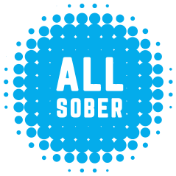Warning Signs That Someone You Love Needs Treatment
Addiction does not form overnight. Here's what to look for if you're concerned about a loved one

Alcohol and drug use exists on a spectrum that traverses from social, experimental or short-term use that does not cause harm to chronic, dependent abuse of substances that has potential to cause serious and damaging consequences.
An addiction does not form overnight. It is the result of a prolonged process or progression of repeated and growing dependence and overuse that gradually changes how an individual views their alcohol or drug use, along with the demonstrated changes to behavior, habits and conduct.
Loved ones and those in close daily contact are in the best position to gauge changes in behaviors, physical attributes and attitudes that are a result of someone who has shifted into increasingly dangerous zones because of substance abuse that might require intervention or treatment. Addiction is a disease that can be treated, and recognizing the warning signs or red flags can make all the difference in helping a loved one receive the help they need.
Increased Tolerance
- Consuming more alcohol to achieve desired sense of euphoria or relief of stress
- Increase in taking more medication to relieve pain or deal with anxiety
Behavior Changes
- Mood swings
- Unexplained change in personality or attitude
- Sleeping patterns
- Irritability, depression, anxiety
- Eating habits
- Lack of motivation
Physical Symptoms
- Marked or unexplained changes in appearance
- Sudden weight loss or gain
- Bruising
- Inertia or dullness
- Poor hygiene
- Bloodshot or glassy eyes
- Frequent bouts of nausea, vomiting, flu-type symptoms
- Shakes or tremors
Relationship Problems
- Increased fighting or problems at work
- Loss of interest in family or friends
- Isolation or distancing behavior
Social Connections
- Changes to group and individual relationships that foster alcohol and drug use
- Avoiding familiar and close friends to diminish or hide substance use
- Lack of participation in hobbies or activities once enjoyed by the individual
Financial Problems
- Increased debt
- Loss of income from work
- Additional legal or healthcare fees associated with substance use
Risky Behavior
- Stealing money
- Driving under the influence
- Frequenting unsafe places
Many of these warning signs are commonly linked, and the degree of intensity may vary depending on how long alcohol or drug dependence has been taking place. If you recognize that your loved one is no longer able to control consumption or is experiencing increased negative behavioral, physical or social problems, it may be time to research treatment options to discuss and explore with your family member or close friend.
You may encounter resistance, but initiating dialogue may well open the door to solutions that bring relief and remedy for a loved one’s issue with substance use disorder.
More Help & Information
Sobriety vs. Recovery: What's the Difference?
Are the concepts themselves up for debate? Do they require certain treatments, or abstinence from everything? It's complicated! And new ways of thinking are changing the conversation.
Now Elite NFL Players, They First Tackled Addiction | News Roundup
All Sober compiles the best of the latest headlines. Here's your addiction and recovery news for the week of Feb. 19, 2024!
Help Them Help You: Explaining Your Mental Health to Your Family
Your mental health can affect — and be affected by — your loved ones. Here's how to discuss it with them so everyone can heal.
Dry January (and Beyond): The Possibilities Are Endless
There's never been a better time to go sober. Whether you're trying it out this month or already living the life, join us for some tips, ideas, inspiration — and maybe even new friends.
Sober Holiday Tips: Meeting 'Share-a-Thons'
Need to get out of the house for a bit and see some friendly sober faces? Recovery support group meeting marathons run 24/7 from Christmas Eve through New Year's Day.
What Happens After an Intervention?
Your loved one agreed to get treatment for addiction during their intervention — or not. Here's what you need to know about what comes next.
We're in This Together: Building a Healthy Sober Support Network
You are the captain of your recovery, but you don't have to do it alone. A sober support network will lift you up in tough times and celebrate your triumphs.
Real-Life Recovery Tips: Phone a Friend
When you're traveling, you can take your sober support network with you — right in your pocket. Rocker Kasim Sulton shares his top recovery tip in this video.











